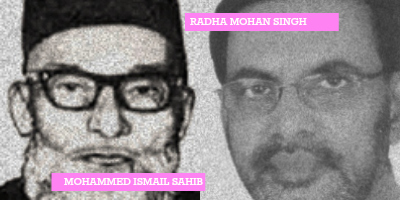 Over the last three decades, in spite of the deeply divisive nature of the issue (as I had explained in my previous post here), the Supreme Court of India has strongly supported moving towards the aspiration enshrined in Article 44 of the Constitution of India by unifying the personal laws of the nation’s diverse communities. The Court is often at the frontline of the nation’s policy debates and its decisions often guide other branches of government. I will now briefly examine three landmark cases that have come to exemplify the Court’s stance on the uniform civil code.
Over the last three decades, in spite of the deeply divisive nature of the issue (as I had explained in my previous post here), the Supreme Court of India has strongly supported moving towards the aspiration enshrined in Article 44 of the Constitution of India by unifying the personal laws of the nation’s diverse communities. The Court is often at the frontline of the nation’s policy debates and its decisions often guide other branches of government. I will now briefly examine three landmark cases that have come to exemplify the Court’s stance on the uniform civil code.
The first major case to focus attention on the issue was Mohammed Ahmed Khan v. Shah Bano Begum (AIR 1985 SC 945). Here, a penurious Muslim woman claimed maintenance from her husband under Section 125 of the Code of Criminal Procedure, 1973 (“CrPC”), and was granted her claim. The then Chief Justice of India, Y.V. Chandrachud, came out strongly in favour of a uniform civil code, observing that, “A common civil code will help the cause of national integration by removing disparate loyalties to law which have conflicting ideologies.” A national furore erupted in the wake of this decision, prompting the incumbent Rajiv Gandhi government to overturn the decision by enacting the Muslim Women (Protection on Divorce) Act, 1985, which effectively barred Muslim women from claiming maintenance under Section 125. This move contradicted the observations of the Supreme Court and was justified on the grounds that mere observations of the Court did not obligate the other branches of government to actually implement such a uniform code.

A decade later, in Sarla Mudgal v. Union of India (AIR 1995 SC 1531), the Supreme Court revisited the matter. The issue in question was whether a Hindu man who embraced Islam could solemnise a second marriage as a Muslim. The Court held that in such a case, the first marriage would have to be dissolved under the Hindu Marriage Act, 1955. A simple conversion to Islam followed by marrying again would not amount to such a dissolution. The man’s first marriage would therefore, still be valid and under Hindu law, his second marriage, solemnised after his conversion, would be illegal under Section 494 of the Indian Penal Code, 1860. Justice Kuldip Singh, delivering the judgment, remarked sharply that “the Rulers of the day are not in a mood to retrieve Article 44 from the cold storage where it is lying since 1949. The Governments – which have come and gone – have so far failed to make any effort towards “unified personal law for all Indians”. He went on to note that, “When more than 80% of the citizens have already been brought under the codified personal law there is no justification whatsoever to keep in abeyance, any more, the introduction of “uniform civil code” for all citizens in the territory of India.”
Thereafter, in 2003, in John Vallamattom v. Union of India (AIR 2003 SC 2902), the Court had reason once again to express its opinion on the subject of a uniform civil code. In this instance, John Vallamattom, a Christian priest, challenged the constitutional validity of Section 118 of the Indian Succession Act, 1925, claiming that it was unfairly discriminatory against Christians for placing unreasonable restrictions on their ability to will away land as donations for charitable and religious purposes. A three-judge bench of the Supreme Court, comprising Chief Justice V.N. Khare, and Justices A.R. Lakshmanan and S.B. Sinha, struck down the provision as being violative of Article 14 of the Constitution. Chief Justice Khare commented: “We would like to State that Article 44 provides that the State shall endeavour to secure for all citizens a uniform civil code throughout the territory of India…It is a matter of great regret that Article 44 of the Constitution has not been given effect to. Parliament is still to step in for framing a common civil code in the country. A common civil code will help the cause of national integration by removing the contradictions based on ideologies.” This case was also acknowledged in the 209th Law Commission Report on the Proposal for the Omission of Section 213 of the Indian Succession Act, 1925. In the immediate aftermath of the ruling, the BJP called for a national debate on a uniform civil code, and wanted the Law Commission to incorporate “fair and equitable ingredients” from the personal laws of the Hindus, Muslims, Christians, and Parsis to formulate a common code.
Therefore, despite the political ambivalence surrounding the issue, the Supreme Court’s consistent advocacy in favour of a uniform civil code suggests that from a legal perspective, India may well be ready for uniform personal laws, and also that there is sufficient institutional competence and willingness for the adjudication and administration of these new laws.
(Akshay Sreevatsa is an alumnus of NLSIU (2011) and UC Berkeley School of Law (2014). He currently teaches International Law at The School of Law, Christ University, Bangalore.)





